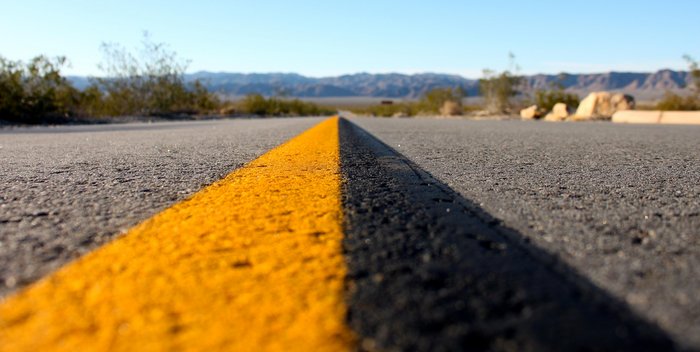Safety is the top priority for motor carriers. Running a safe operation requires thorough knowledge and understanding of the Federal Motor Carrier Safety Administration (FMCSA) regulations. In addition to educating drivers on these regulations, there are specific company fleet safety policies and procedures that must be reviewed; such as the completion of roadside inspection paperwork to insure that both the fleet and drivers are in compliance with all FMCSA regulations, as well as ongoing driver training on how to operate the equipment and its added safety specifications in the proper manner.
In 2010, FMCSA launched Compliance, Safety, and Accountability (CSA) establishing a nationwide system for motor carrier road safety directed at both the vehicle operator and general public that incorporated a new measurement system for monitoring and scoring motor carriers. Within CSA stands the Safety Management System (SMS) that measures the on-road performance of carriers and drivers using the motor carrier’s two-year rolling data including its roadside inspections, all safety-based violations, reported crashes and the federal motor carrier census. The SMS considers the following five items to quantify and measure performance in the Behavior Analysis and Safety Improvement Categories (BASICs):
- The number of safety violations and inspections;
- The severity of safety violations or crashes;
- When the safety violations occurred (with recent events weighted more heavily);
- The number of trucks/buses a carrier operates as well as the number of vehicle miles traveled; and
- Serious violations uncovered during investigations.
CSA Basics
- Unsafe driving — Operation of commercial motor vehicles (CMVs) by drivers in a dangerous or careless manner.
Example violations: Speeding, reckless driving, improper lane change, and inattention. (FMCSR Parts 392 and 397). Public view. - Hours-of-service (HOS) Compliance — Operation of CMVs by drivers who are ill, fatigued, or in non-compliance with the HOS regulations. This BASIC includes violations of regulations pertaining to records of duty status (RODS) as they relate to HOS requirements and the management of CMV driver fatigue
Example violations: HOS RODS, and operating a CMV while ill or fatigued. (FMCSR Parts 392 and 395). Public view. - Driver fitness — Operation of CMVs by drivers who are unfit to operate a CMV due to lack of training, experience, or medical qualifications.
Example violations: Failure to have a valid and appropriate commercial driver’s license (CDL) and being medically unqualified to operate a CMV. (FMCSR Parts 383 and 391). Public view. - Controlled substances/alcohol — Operation of CMVs by drivers who are impaired due to alcohol, illegal drugs, and misuse of prescription or over-the-counter medications.
Example violations: Use or possession of controlled substances/alcohol. (FMCSR Parts 382 and 392). Public view. - Vehicle Maintenance — Failure to properly maintain a CMV and/or properly prevent shifting loads. Example violations: Brakes, lights, and other mechanical defects, failure to make required repairs, and improper load securement. (FMCSR Parts 392, 393 and 396). Public view.
- Hazardous materials (HM) Compliance — Unsafe handling of HM on a CMV. Example violations: Release of HM from package, no shipping papers (carrier), and no placards/markings when required. (FMCSR Part 397 and Hazardous Materials Regulations Parts 171, 172, 173, 177, 178, 179, and 180). Not public view.
- Crash Indicator — Histories or patterns of high crash involvement, including frequency and severity. It is based on information from State-reported crashes. Not public view.
The goal of the CSA program is to target safety threats of both motor carriers and their drivers to reduce CMV (Commercial Motor Vehicle) crashes and fatalities. The success of the program is dependent on the motor carriers, drivers, FMCSA, law enforcement partners, and other stakeholders including the insurance industry. The equipment manufacturers are actively involved in improving highway safety by continuously improving vehicle safety additions in the design and engineering of new equipment. Manufacturers are equipping vehicles with state-of-the-art safety features including ABS brakes, air bags, on-board computers, tire pressure monitoring, collision avoidance, roll stability, in/out side camera technology and lane departure warning systems. Fleets equipped with these technologies are experiencing a dramatic reduction in highway violations and accidents. Realizing the dramatic public safety benefits of incorporating this new technology, motor carriers are sparing no expense and are including these features in their new equipment specifications. Aside from reducing accidents, motor carriers are also realizing additional benefits. They are saving time and money on driver recruiting and training as drivers opt to sign with fleets that have newer model equipment. Newer trucks equipped with upgraded safety features reduce the chances of driver CSA violations they are subject to when driving for carriers that use older equipment requiring the driver to be vigilant on maintenance and repair item violations to protect his/her standing.
(Click “Next Page” to continue reading the story.)














